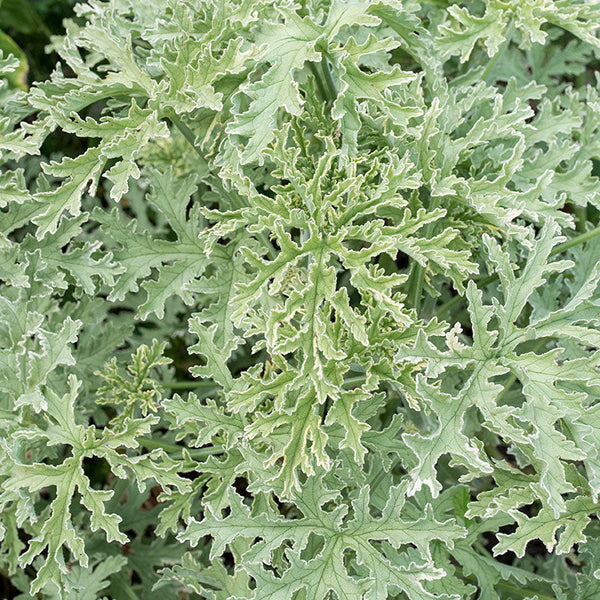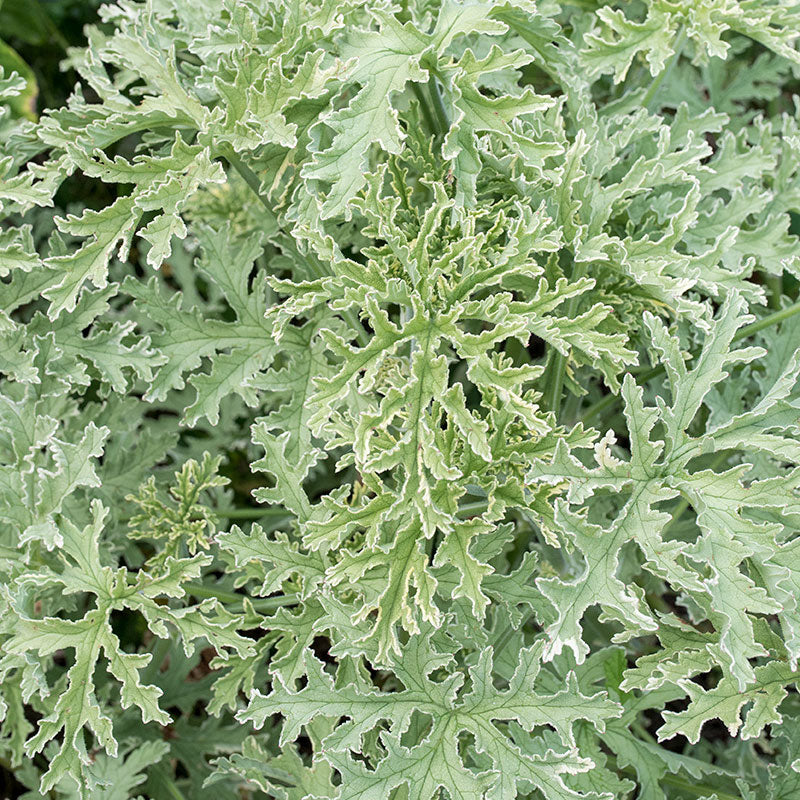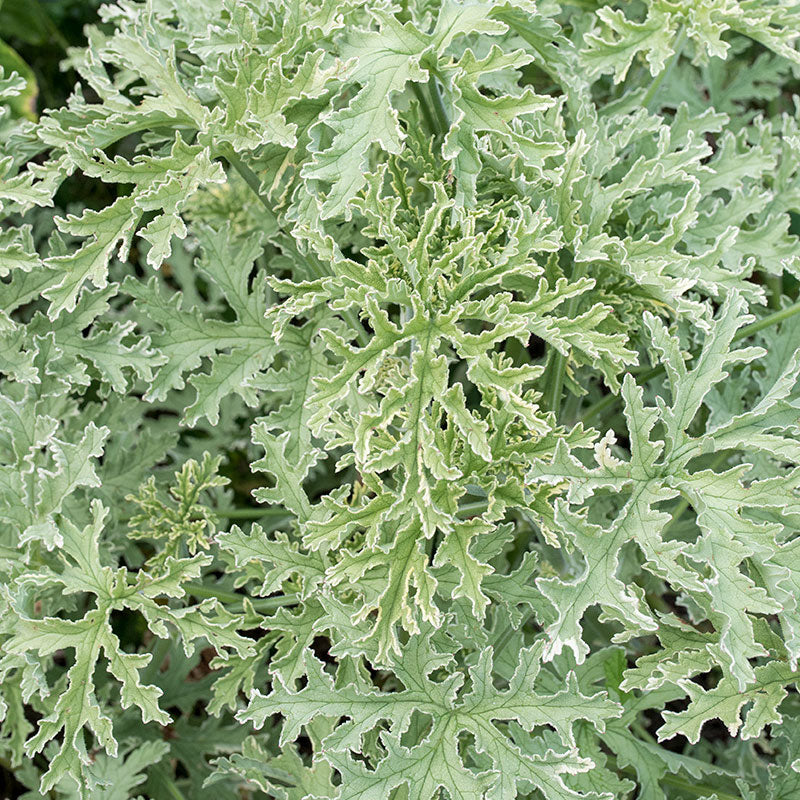WHEN TO SET OUTSIDE
About a week after last frost, when nighttime temperatures remain above 50°F.
PLACEMENT & CULTIVATION
Geraniums traveled from South Africa and were cultivated and marveled over in early glasshouses of the 1600s, and we love them still for their varied beautiful leaves, flower colors, and fragrance. Place scented geraniums in the sun with a bit of afternoon shade, placed where you can easily pick a few leaves to enjoy their sensational fragrance. Be sure to grow in freely-draining garden soil or in clay pots with good drainage, and allow the soil to dry before watering. Flowers bloom in late spring and early summer after a cool period in fall and winter. Prune after flowering ceases to shape and prepare for bringing indoors in late fall before frost, if desired, placing in the sun in a cool room below 60°F.
Watering Details:
Water when soil is dry at least 2" down into pot. Geraniums suffer if the soil stays saturated with water, so water only after soil has dried.
Fertilizer:
Fertilize twice a month with a balanced formulation such as 15-15-15.
Diseases & Pests:
Aphids and mealybugs can be troublesome; if detected, treat with an insecticidal soap or neem oil. Avoid botrytis or gray mold by spacing properly, not wetting the foliage when watering, and keeping dead plant material, such as spent flowers and leaves, cleaned up.
When to Cut for Bouquets:
Cut stems add fragrance to cut flower bouquets and dry leaves for a scented addition to potpourii.

































